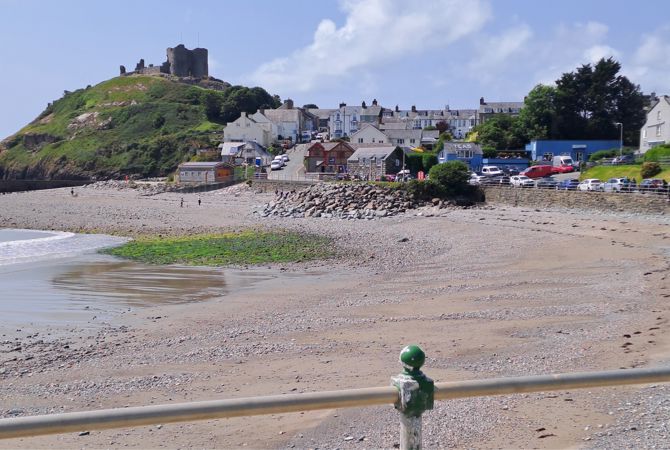How our Pollution Risk Forecasting helps you enjoy Wales bathing waters safely

With summer holidays now underway and warmer weather setting in, many of us will be planning visits to our favourite beaches and bathing waters across Wales.
We know how important bathing waters are to local communities and visitors and the health and wellbeing benefits they bring.
Our teams work hard to keep bathing waters safe, so you can swim with confidence.
Monitoring our designated bathing waters
Our staff sample the water quality at 112 designated bathing water sites across Wales, between 15 May and the 30 September in line with the Bathing Water Regulations 2013 to ensure these waters remain safe for public enjoyment.
We then test the samples in our lab, for two bacteria which are known to cause harm to human health - E. coli and intestinal enterococci (IE) which can cause stomach upsets if swallowed.
These are key indicators that help us understand water quality and any potential health risks for swimmers.
We then use results collected over the past four years to give each site a rating of excellent, good, sufficient or poor.
What is Pollution Risk Forecasting and how does this help?
We run Pollution Risk Forecasting models at 16 of our designated bathing waters sites in Wales.
The bathing water at Swansea Bay has a separate model and the predictions for this bathing water are only available via Swansea County Borough Council Website
The models help us to predict when water quality may be temporarily reduced due to environmental factors, such as heavy rainfall.
It’s important to note however, that these forecasts do not mean there has been a pollution incident, for example, a sewage spill.
Instead, they highlight when there is a higher chance that water quality might be temporarily affected.
We have Pollution Risk Forecasting models in place the following sites:
Aberdyfi, Abergele(pensarn),Aberystwyth South, Broad Haven (Central), Cemaes, Criccieth, Kinmel Bay (Sandy Cove) Llangrannog, New Quay North, Newport North, Poppit West, Prestatyn Central, Rhyl Central, Rhyl East, Swansea Bay, Traeth Gwyn New Quay.
Why can environmental factors have an impact?
Heavy or prolonged rainfall can wash pollutants from roads, fields and urban areas in to our rivers and seas.
It can also cause storm overflows from the sewage network to spill, if waste water treatment systems are overwhelmed. High tides and strong winds can also affect the water quality.
We have developed forecasting models to predict when these environmental factors are likely to lead to poorer water quality, to inform you before you decide whether to swim.
What does this mean for swimmers?
We publish daily forecasts during the bathing water season so that you can check the likely water quality and make an informed decision before you swim.
You can find our daily forecasts on our website here Bathing waters overview
Both water companies in Wales – Dŵr Cymru Welsh Water and Hafren Dyfrdwy – now provide near real-time alerts for when storm overflows have spilled at designated bathing waters.
What happens if a pollution incident does occur?
In the event of a pollution incident impacting bathing water quality, our teams will respond and work with the relevant authorities to identify and stop the source.
For significant incidents, we may declare an ‘abnormal situation’ and the local authorities may make a decision to temporarily close a beach or bathing water until water quality returns to normal.
We will always take the appropriate enforcement action against those responsible.
Improving water quality for the long term remains firmly at the top of our agenda, and we will continue to work closely with the agriculture sector, water companies and local communities to ensure the highest standard of bathing waters for everyone.
Suspected pollution can be reported to us by calling our 24/7 incident hotline on 03000 65 3000 or online via the Report It page.
If you enjoy wild swimming, please follow the advice published by Public Health Wales: Staying safe in outdoor waters in Wales - Public Health Wales and follow the wild swimming code.
